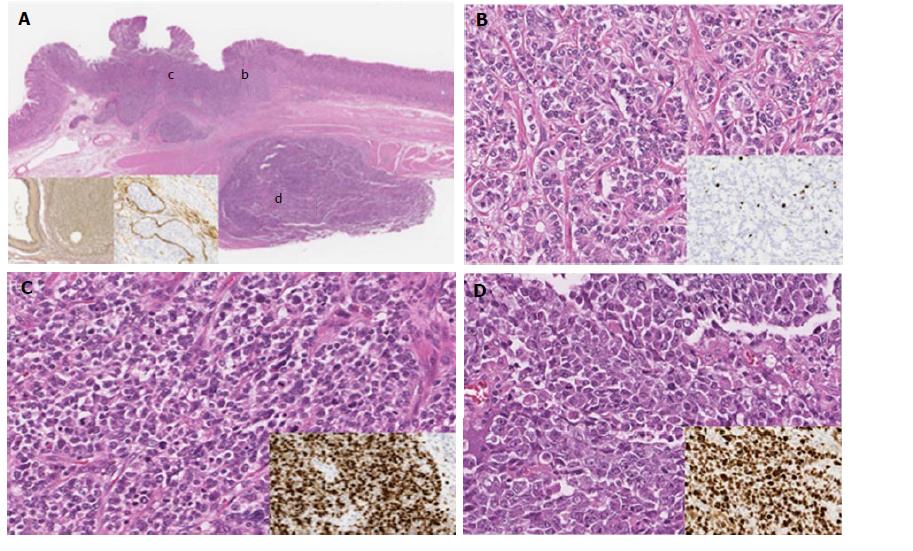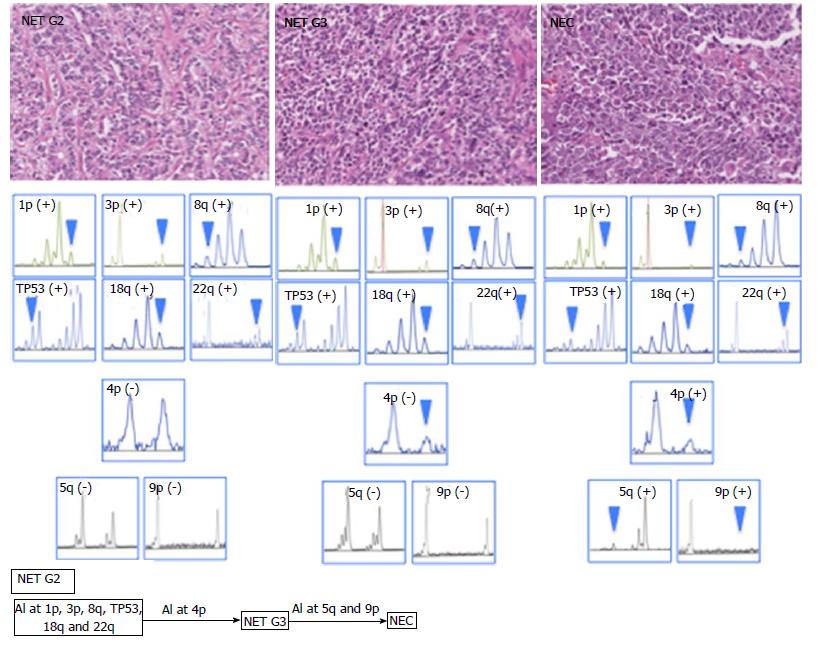Copyright
©The Author(s) 2017.
World Journal of Clinical Cases. Nov 16, 2017; 5(11): 397-402
Published online Nov 16, 2017. doi: 10.12998/wjcc.v5.i11.397
Published online Nov 16, 2017. doi: 10.12998/wjcc.v5.i11.397
Figure 1 Histological findings of an HE-stained section of a resected specimen.
A: Low-magnification image of the surgical specimen. The tumor component was composed of two lesions (a submucosal lesion and an intramucosal lesion). These two lesions were separated by muscle layer (inset: left, EVG staining; right, D2-40 immunohistochemical staining); B: NET G2 component (inset: Ki-67 positive rate, 6.5%); C: NET G3 component (inset: Ki-67 positive rate, 99.5%); D: Large cell NEC component (inset: Ki-67 positive rate, 88.1%). NEC: Neuroendocrine carcinoma; NET: Neuroendocrine tumor.
Figure 2 Accumulation of allelic imbalance through the progression from neuroendocrine tumor G2 to neuroendocrine tumor G3 to neuroendocrine carcinoma in the present case.
AIs at 1p, 3p, 8q, TP53, 18q, and 22q were common in three components (NET G2, NET G3, and NEC). AI at 4p was acquired during the progression from NET G2 to G3. AIs at 5q and 8q were found during progression from NET G3 to NEC. NEC: Neuroendocrine carcinoma; NET: Neuroendocrine tumor; AI: Allelic imbalance.
- Citation: Uesugi N, Sugimoto R, Eizuka M, Fujita Y, Osakabe M, Koeda K, Kosaka T, Yanai S, Ishida K, Sasaki A, Matsumoto T, Sugai T. Case of gastric neuroendocrine carcinoma showing an interesting tumorigenic pathway. World Journal of Clinical Cases 2017; 5(11): 397-402
- URL: https://www.wjgnet.com/2307-8960/full/v5/i11/397.htm
- DOI: https://dx.doi.org/10.12998/wjcc.v5.i11.397










